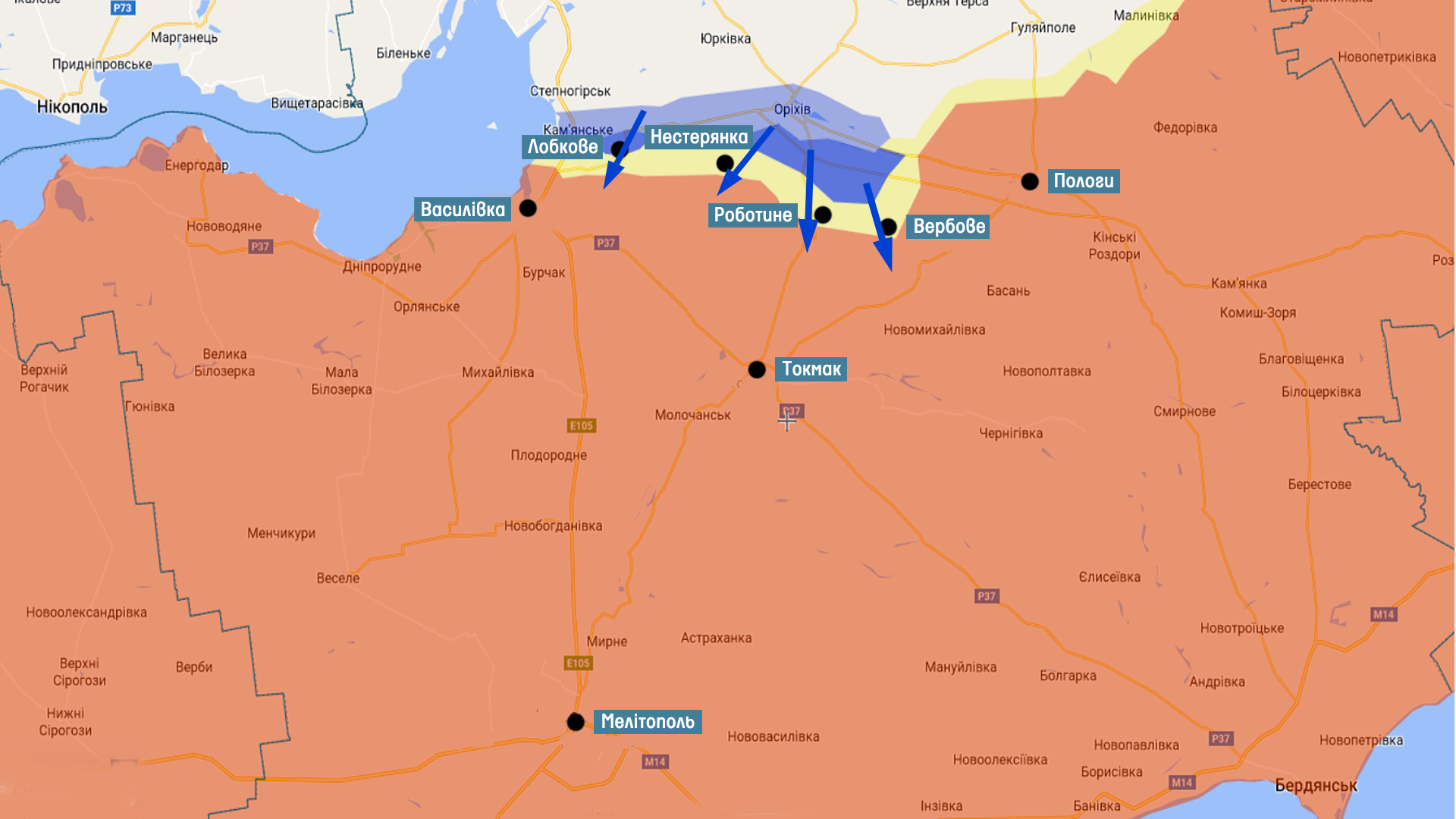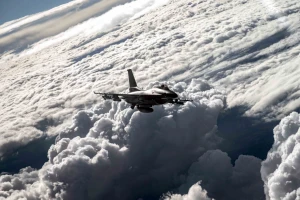
To prevent terrorist attacks by Russia we need to destroy Russian troops in battle - Serhiy Zgurets
We need to find ways to prevent Russian terrorist attacks, similar to the Kakhovka HPP dam explosion, and the main option is to destroy the Russian forces on the battlefield
Counteroffensive of the Ukrainian Armed Forces in the Zaporizhzhia direction
The Ukrainian Armed Forces have launched a summer offensive operation, which can be seen as a significant counterattack. During a press conference in Kyiv, Volodymyr Zelenskyy stated that the counteroffensive and defense efforts are currently underway. Military leaders are optimistic and positive about the upcoming activities.
While official information about the counteroffensive is limited, there are increasing reports from OSINT analysts, official military representatives, and soldiers themselves. The intensity of the fighting has escalated in the Zaporizhzhia direction.
The commander of the Defense Forces in the Tavria direction reported the destruction of over seven Russian companies on June 10 and five yesterday. This translates to approximately 500-700 enemy soldiers eliminated due to the active efforts of our artillery.
These developments indicate active fighting in both the Zaporizhzhia and Donetsk directions. Additionally, several settlements that were previously in the gray zone or under enemy control have now come under the control of the Armed Forces of Ukraine. A video captures our soldiers entering the village of Lobkove in Zaporizhzhia, progressing beyond Vasylivka.

The Ukrainian Armed Forces achieved local successes in the southwest and southeast of Orikhove, in the western part of the Zaporizhzhia region. A video with confirmed geolocation provides evidence of these achievements.
Throughout the week, fighting continued in the Velyka Novosilka area, which includes Novodarivka, Neskuchne, and Novodonetsk. Positive news came from the Ukrainian Armed Forces regarding the liberation of Blahodatne, located south of Velyka Novosilka.
The enemy put up resistance but ultimately could not withstand the Ukrainian defenders' attack. A Russian prisoner was also captured, and the enemy left Neskuchne near Blahodatne.
All these videos provide new insights into the battlefield and shed light on the ongoing conflict, showcasing the fighting near Mala Tokmachka and Orikhove, where Leopard tanks and Bradley infantry fighting vehicles were targeted.
A video from the 47th brigade demonstrated the exceptional skills and proper defensive strategies employed by Ukrainian fighters, ensuring the safety of personnel without causing panic. It is evident that these soldiers can fight effectively under any circumstances.
However, lessons must be learned from the battle near Mala Tokmachka, taking into account the need for air support and other forms of cover in future offensive operations. Each active section of the front and every meter of territory regained from the Russian Federation comes at a heavy cost, with the lives of Ukrainian soldiers who bravely execute these decisions through their skill and training.

The situation around Bakhmut
The counteroffensive by Ukraine continues in the Bakhmut area. The spokesperson for OC East mentioned an advance of up to 1,400 meters in the region. However, the enemy is putting up resistance near Berkhivka and Klishchiivka. We are currently using artillery to push them back, but they are trying to dig in and hold their defense. The Russian Federation is determined to keep their occupied positions and it takes bravery from our military to push the enemy out of the temporarily occupied territory. Every direction is crucial and significant at the moment.
Position in the Siversk direction
According to Oleksandr Afanasyev, Russian 24th special forces brigade has been causing trouble on our part of the front. They are conducting active aerial reconnaissance, using Lancet drones and attempting to destroy Ukrainian equipment. Ukraine’s Armed Forces are actively defending themselves and carrying out offensive actions, although there hasn't been official information about it yet.
Special purpose brigades are highly skilled and fully staffed. They don't stay in trenches but have specific tasks to perform. If they were redeployed, it means that Russia is concerned about Ukraine's large-scale offensive.
Aleksandr Afanasyev's unit prevents the Russian special forces from being relocated to another direction. The unit has held its position for nearly a year without retreating. The main task is to keep as many enemy forces as possible opposite Siversk. Different armored vehicles, such as MK-113s, infantry fighting vehicles, and tanks, work together to destroy the advanced units or those trying to advance. It's a highly effective tactic.
There are very few pro-Russian individuals in Siversk, and the majority of the population supports Ukraine. The army provides assistance to these pro-Ukrainian people whenever possible. The Russian Federation is conserving ammunition but is causing chaos in the city. According to Oleksandr Afanasyev, the Russians destroyed a wooden dummy tank instead of a real Ukrainian tank using the Lancet drone. There are many such dummies in Siversk and its surroundings.
Kakhovka HPP dam explosion
According to Oleksiy Yizhak, blowing up the HPP is a serious crime of war. The Russian Federation wanted to make it harder for Ukraine to advance towards Crimea and was concerned that Armyansk could be reached quickly along the seashore.
In the laws of war, both nuclear power plants (NPPs) and hydroelectric power plants (HPPs) are mentioned together. If Russia did something at the HPP, it suggests they might do the same at the ZNPP.
This is a complicated situation and a sign of poor management because the consequences of such actions cannot be predicted. The Russians didn't think about the consequences and are changing their explanation as they go along.
The international system is not capable of responding to current challenges and threats. It was established after World War II. There are also doubts about the effectiveness of NATO, but they manage smaller issues and can provide a platform for negotiations and address humanitarian concerns.
After the war, humanitarian organizations need a complete overhaul. Regarding the response from individual countries, there are two aspects among the determined nations. First, this happened during another round of negotiations, testing the waters. De-occupation has begun, and Putin and the Russian elites are reacting. They are assessing what Russia is willing to do to end the war.
Those who caused the explosion expected that the West wouldn't easily abandon talks. Our partners won't be affected. If they decide, they will take action. If not, it will send a negative signal for future steps.
The first significant step is for the International Criminal Court (ICC) to issue international arrest warrants for those responsible for the bombing. Investigations are underway in the United States and Great Britain to determine who gave the order.
They will have clear evidence against the Russian Federation's corporate entities responsible for controlling the Kakhovka dam and the ZNPP, namely Roshydro and Rosatom, and there will be severe consequences if such actions continue. Taking these steps would be positive, but if not, it may encourage Russia to commit further war crimes.
The main conclusion is that Russia committed a crime, and now we are waiting for the appropriate response from the international community. In addition to sanctions, we need to explore other options to prevent the Russian Federation from carrying out such acts of terrorism. The most crucial factor is the ability of the Ukrainian Armed Forces to defeat the Russian Armed Forces on the battlefield and prevent them from using military force to influence the global community and neighboring countries. We will see how this unfolds.
- News











































